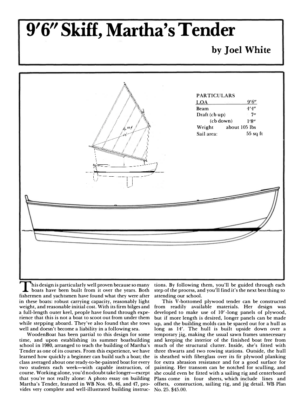
9'6" Martha's Tender
The original print version of this article can be viewed as a PDF or purchased from the WoodenBoat Store.
Join to view PDF Purchase 9'6" Martha's TenderThe Martha’s Tender is a particularly well-proven design because so many boats have been built from it over the years. Both fishermen and yachtsmen have found what they were after in these boats: robust carrying capacity, reasonably light weight, and reasonable initial cost. With its firm bilges and a full-length outer keel, people have found through experience that this is not a boat to scoot out from under them while stepping aboard. They’ve also found that she tows well and doesn’t become a liability in a following sea.
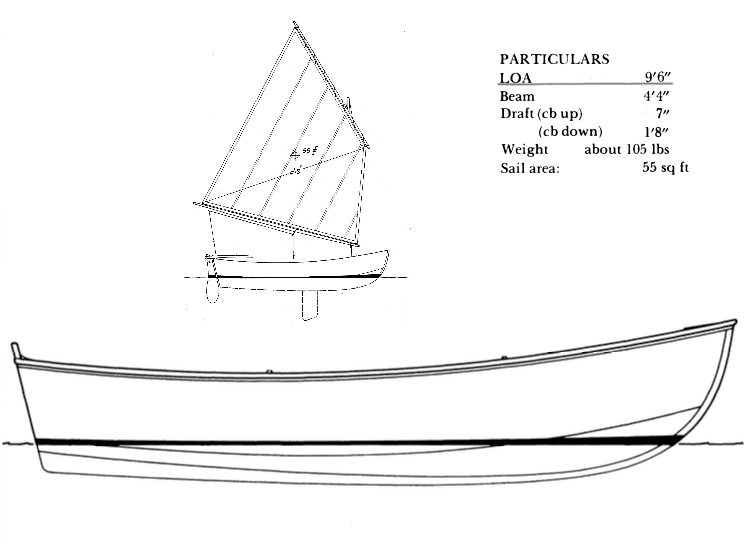
Martha’s Tender Particulars
WoodenBoat has been partial to this design for some time, and upon establishing its summer boatbuilding school in 1980, arranged to teach the building of Martha’s Tender as one of its courses. From this experience, we have learned how quickly a beginner can build such a boat; the class averaged about one ready-to-be-painted boat for every two students each week — with capable instruction, of course. Working alone, you’d no doubt take longer, except that you’re not really alone; a photo essay on building Martha’s Tender, featured in WB Nos. 45, 46, and 47, provides very complete and well-illustrated building instructions. By following them, you’ll be guided through each step of the process, and you’ll find it’s the next best thing to attending the WoodenBoat School.
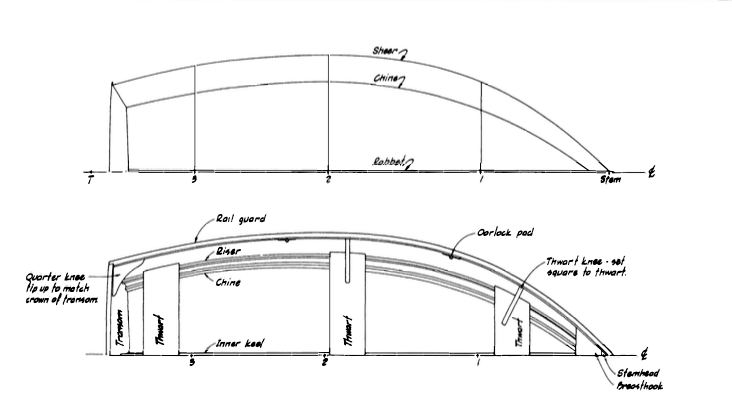
Martha’s Tender Plan of Half Breadths and Profile
This V-bottomed plywood tender can be constructed from readily available materials. Her design was developed to make use of 10′-long panels of plywood. But if more length is desired, longer panels can be made up, and the building molds can be spaced out for a hull as long as 14′. The hull is built upside down over a temporary jig, making the usual sawn frames unnecessary and keeping the interior of the finished boat free from much of the structural clutter. Inside, she’s fitted with three thwarts and two rowing stations. Outside, the hull is sheathed with fiberglass over its fir plywood planking for extra abrasion resistance and for a good surface for painting. Her transom can be notched for sculling, and she could even be fitted with a sailing rig and centerboard.
Plans for Martha’s Tender come in four sheets, which include lines and offsets, construction, sailing rig, and jig detail. WB Plan No. 25. $45.00. Originally, this was a three-sheet set of plans, but a sailing rig was added. So, the fourth sheet includes spars, sail, tiller, rudder and trunk. You can always use the Shellback Dinghy book if you want to know how to build spars.
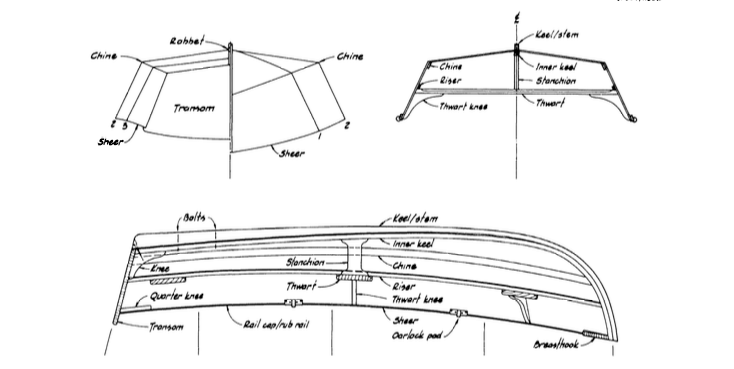
Martha’s Tender Body Plan and Section Drawings
Additional Reading
For more details on the plans for building Martha’s Tender, as well as a step-by-step how-to on constructing a sail for her, purchase a digital copy of the Build-a-Boat guide.
Plan 25
DESCRIPTION
Hull type: V-bottomed
Rig: None yet
Construction: Plywood
PERFORMANCE
Suitable for: Protected waters
Intended capacity: 3
Trailerable: Yes
Propulsion: Oars, sail
Speed (knots): 1-3
BUILDING DATA
Skill needed: Basic
Lofting required: No
Featured as “How to Build” article in WB Nos. 45, 46, 47
PLANS DATA
No. of sheets: 4
Level of detail: Average
Cost per set: $45.00
WB Plan No. 25
Finished 9’6″ Martha’s Tender Images
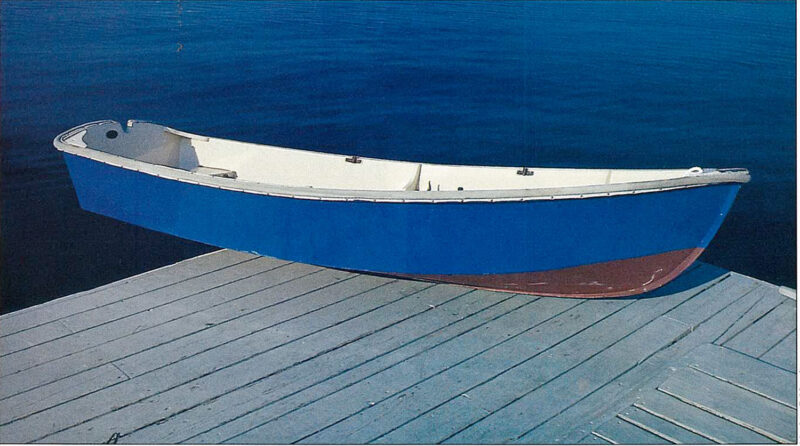 Matthew P. Murphy
Matthew P. MurphyA completed Martha’s Tender
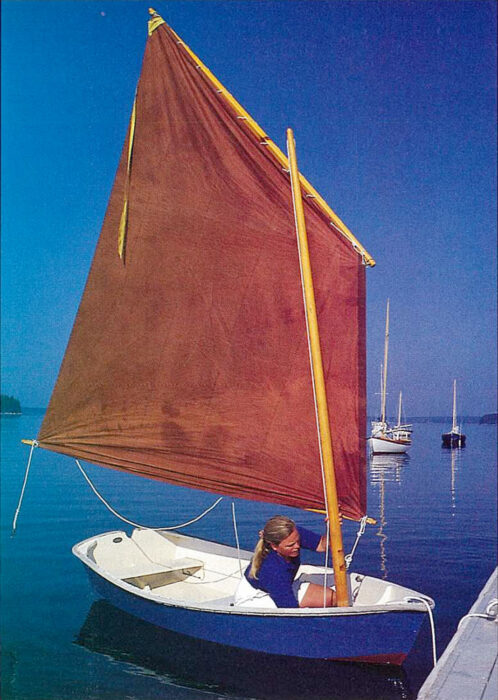 Matthew P. Murphy
Matthew P. MurphyThe sail for Martha’s Tender can also be installed in Joel White’s Shellback Dinghy.
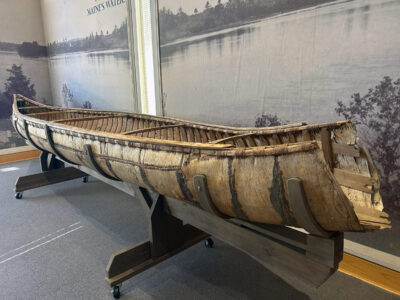
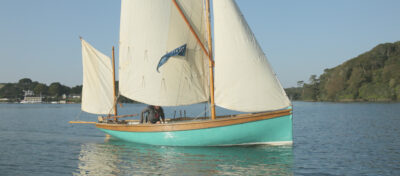
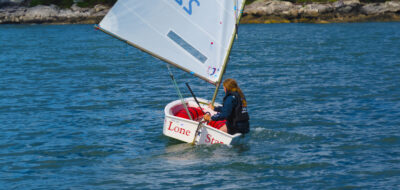
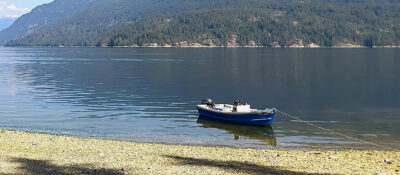
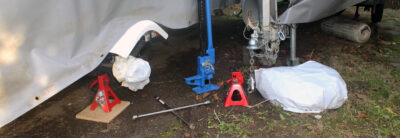
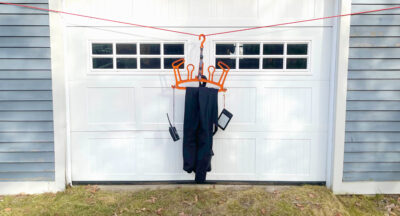
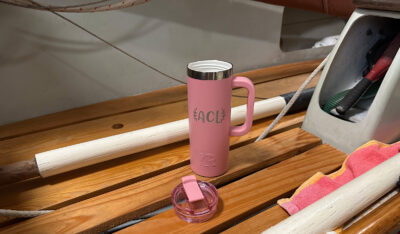
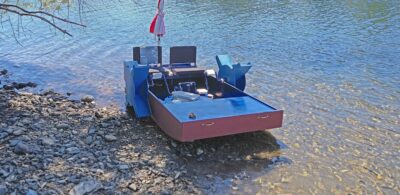
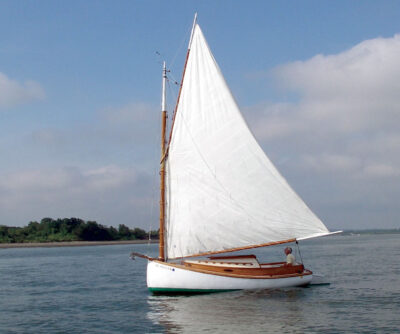
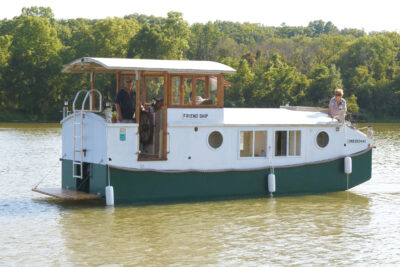
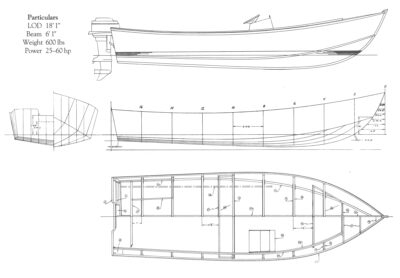
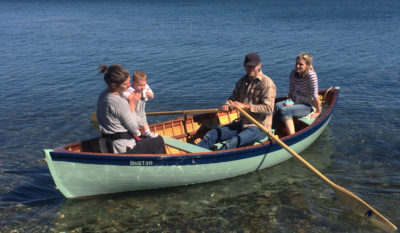
Join The Conversation
We welcome your comments about this article. If you’d like to include a photo or a video with your comment, please email the file or link.